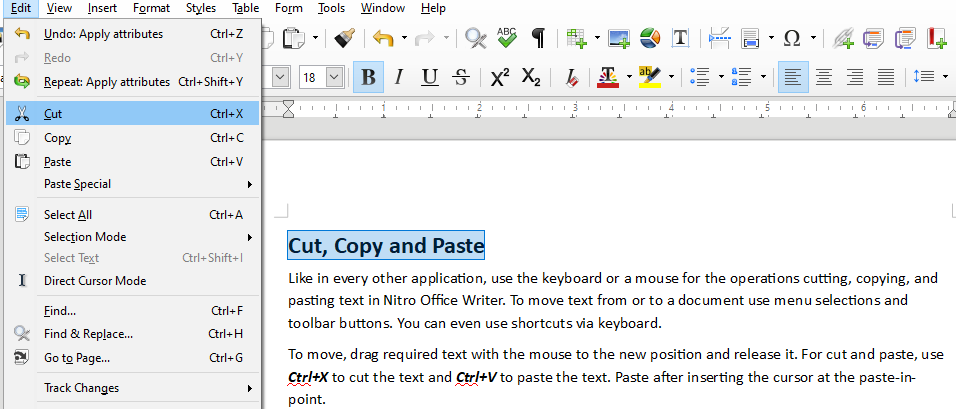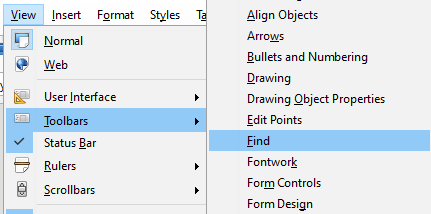How to work with Text: This guide introduces you to the basics of working with text in the writer and the instructions you should know.
Working with text including selecting, copying, pasting, or moving text in Nebula Office Writer is the same as in every other application. You can either swipe the cursor over the text or select the word by double-clicking it. If you want to select a sentence, click the mouse thrice, and if it is a paragraph, quadruple click. You can also do this also by employing the “extension selection” mode in which you click the text, press F8, and select the contiguous block of text using arrow keys on the keyboard.
If the texts are non-consecutive select the first part of the text with the mouse, press Ctrl key, and using the mouse select the remaining text. You can repeat these steps as much as you need.
Using Keyboard
For a change, you can try with the keyboard as well. If you are using a keyboard to select non-consecutive texts, after selecting the first piece of text, press Shift+ F8 which activates the “Adding Selection” mode in Writer.
After that, go the next piece of item to be selected using arrow keys, hold down the Shift key, and select the rest of the text. Repeat the same for more. The user can work on or format the selected text. This comprises cut and paste, copy and paste, change the styles, delete, and so on. To exit from this mode press Esc.
Cut, Copy and Paste
Like in every other application, use the keyboard or a mouse for the operations cutting, copying, and pasting text in Nebula Office Writer. To move text from or to a document use menu selections and toolbar buttons. You can even use shortcuts via keyboard.
To move, drag required text with the mouse to the new position and release it. For cut and paste, use Ctrl+X to cut the text and Ctrl+V to paste the text. Paste after inserting the cursor at the paste-in-point.

Copy Text from Web
People often seek how to copy specific text to the document especially from other sources like Web pages. Even you might have that query. To copy and paste, select the text, and drag it by holding the Ctrl key to the place. You can also alternatively use the buttons on the Standard toolbar for the operations.
When you are pasting text, either from the document itself or from other documents or web pages, the results depend on the original location of the text as well the way you are pasting it. When you click Paste or Ctrl+V the pasted text holds back the formatting it had before dragging. For example, bold or italics. But when you paste from web sources, the text is automatically identified into tables/frames as part of the format. If you don’t like it, you can press Ctrl+Z or Undo.
If you want the text get the paragraph style or format at the insertion point-click edit and then Paste Special. Two other options are to click the arrow button of the combination Paste button or do not release the left button of your mouse until you click the paste button. Now, from the resulting menu, you can select the unformatted text and can paste it with Shift+Ctrl+Alt+V.
Finding and Replacing Text
To search for the text in a document and formatting, there are two ways.
The first one is Find toolbar and the other one, Find and Replace dialog. The Find toolbar is shown tailed just above the Status bar-bottom of the Office window. However, you can drive it to another location.
If you cannot see the Find Toolbar, follow View -> Toolbars -> Find in the menu bar to display it or press Ctrl + F. In the Find toolbar, you can click in the text input box and type search text. Once you type the text, press Enter to find the nearest occurrence of the text from the current cursor position. Depending on your need you can click Find Next and Find Previous for more.

To exhibit the Find and Replace dialog, Edit -> Find & Replace from the menu bar or click Ctrl+H. When the dialog is open, type the text that you want to search for. To replace it, type the new content in the Replace box. When you have arranged the text, click Find Next and replace it with different text by clicking Replace.
Read more articles
